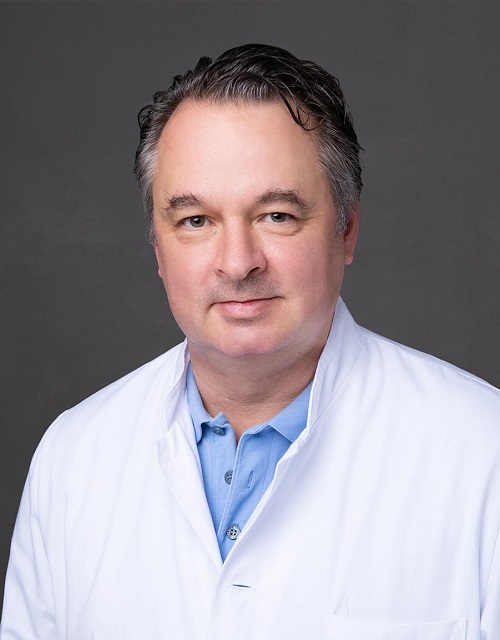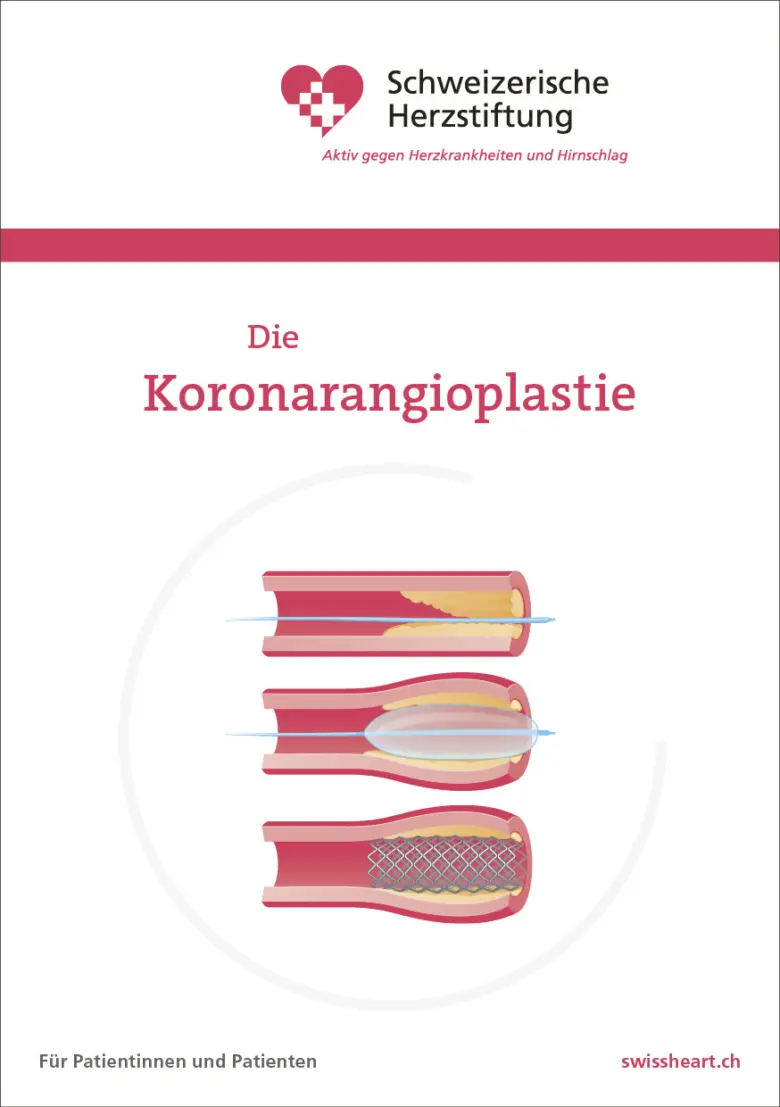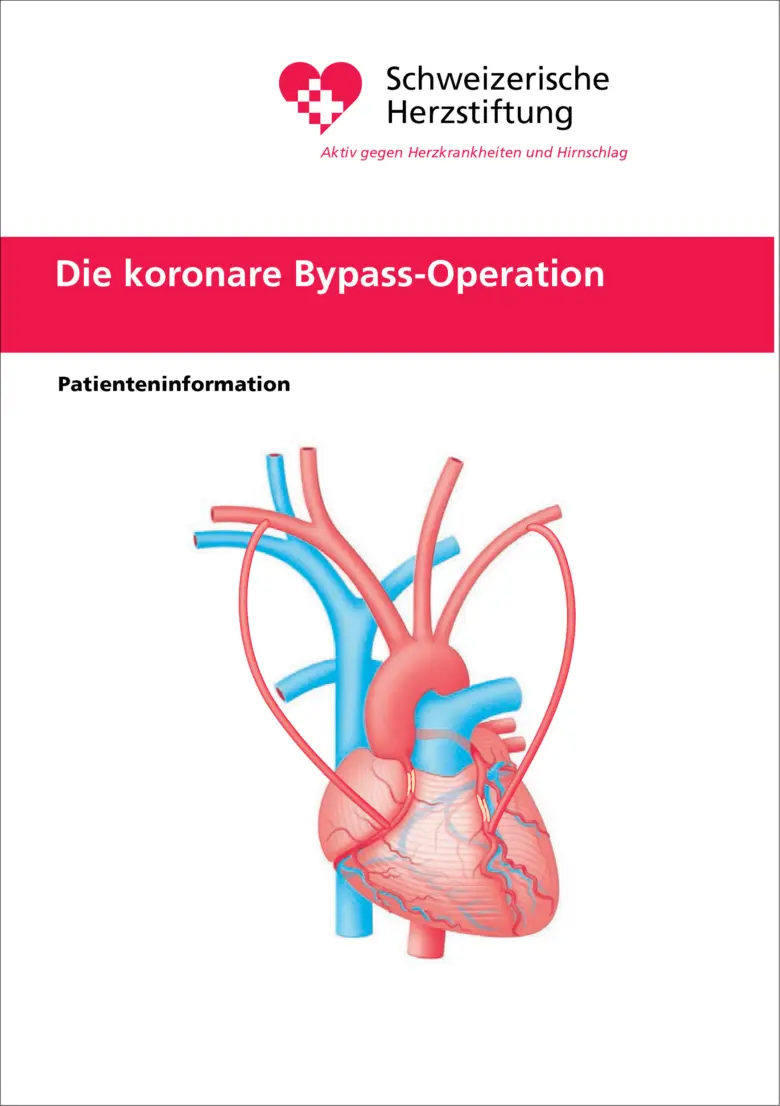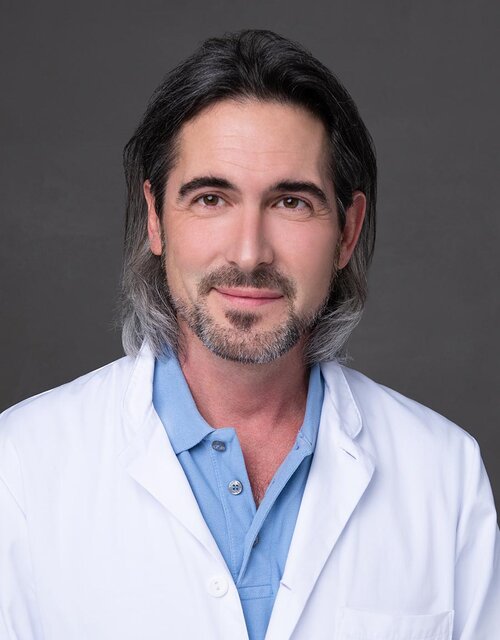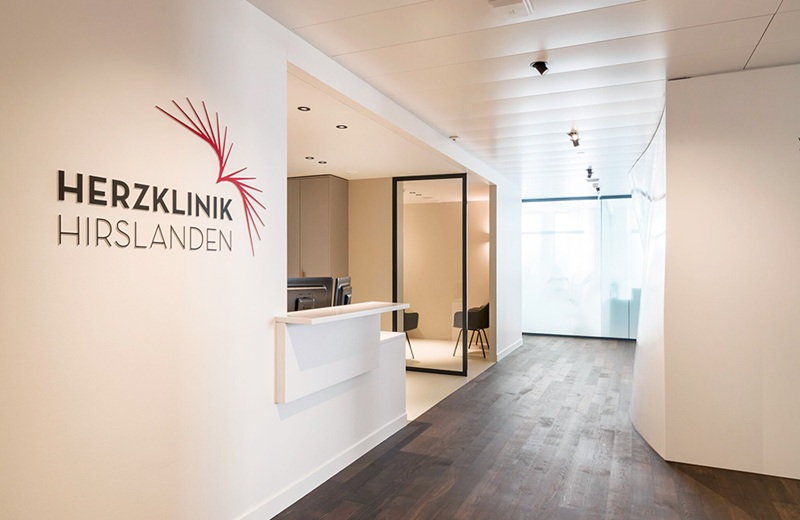Coronary artery disease
The coronary arteries supply the heart muscle with oxygen and nutrients. Narrowing of the coronary arteries causes reduced blood flow to the heart muscle, which typically manifests itself as chest pain (angina) on exertion.
A sudden occlusion of a coronary artery leads to a heart attack with potentially life-threatening consequences.
Coronary artery disease
The coronary arteries supply the heart muscle with oxygen and nutrients. Narrowing of the coronary arteries causes reduced blood flow to the heart muscle, which typically manifests itself as chest pain (angina) on exertion.
A sudden occlusion of a coronary artery leads to a heart attack with potentially life-threatening consequences.
The symptoms of coronary heart disease include
- Angina (pressure-like/pinching pain in the chest area radiating into the left arm)
- Loss of workout capacity and shortness of breath
- Sweating and anxiety
- Cardiac arrhythmia and loss of consciousness
Coronary heart disease is a chronic disease. It begins early with cholesterol deposits (known as arteriosclerosis) in the arteries and progresses over many years.
Risk factors include high blood cholesterol levels, high blood pressure, diabetes, obesity and smoking. A family predisposition may also exist.
The stepwise diagnosis of coronary disease involves a wide variety of methods. The targeted medical history and medical examination represent the first stage and already provide important clues of possible heart disease. The following further diagnostic steps are often used in suspected cases:
- Electrocardiogram (ECG): Resting and exercise ECG
- Echocardiography (ultrasound examination of the heart), including a stress test
- Computed tomography of the heart (cardiac CT)
- Magnetic resonance imaging of the heart (cardiac MRI), cardiac scintigraphy
- Cardiac catheter examination (coronary angiography)
A central treatment approach is to inform patients about their risk factors. Our doctors will work with you to develop strategies to reduce the risk factors and inform you about all available treatment options (see below):
Myocardial infarction often occurs suddenly and abruptly. Occasionally, triggering events (so-called triggers, e.g. infections, operations, stress, etc.) can be identified. However, a heart attack can also occur out of complete well-being. The most important symptoms include
- Persistent, severe pressing/pinching pain in the chest area, possibly with radiation (e.g. to the left arm, lower jaw, abdomen or back)
- Sweating, cold sweats, pallor, anxiety
- Nausea and vomiting
The cause of a heart attack is usually the formation of a clot in one of the coronary arteries, which blocks the artery and leads to a critical undersupply of oxygen and nutrients to the heart muscle. The human heart muscle can survive for approx. 20-30 minutes without oxygen, after which irreversible damage and death of heart muscle cells occurs (heart attack). Rapid action by the person affected, their environment and the emergency medical staff is crucial!
The time factor plays a decisive role in the diagnosis of a heart attack (in an emergency or in the doctor’s office). The symptoms described by the patient and the medical history already provide important clues. An electrocardiogram (ECG) can be performed very quickly and is the central diagnostic procedure for suspected heart attacks. If the ECG is not conclusive, blood tests (so-called cardiac enzymes in the blood) can provide information about the diagnosis.
As soon as the diagnosis of a heart attack is clear, the necessary steps should be taken immediately to reopen the blocked coronary artery: Once again, time is muscle and muscle is life! The most effective procedure is coronary angiography with balloon dilatation and stent implantation of the occluded coronary artery. Medicinal fibrinolysis (dissolution of the clot in the coronary vessel using a highly blood-thinning medication) is hardly used in Switzerland any more, but is still used worldwide, especially in poorer countries.
The symptoms of coronary heart disease include
- Angina (pressure-like/pinching pain in the chest area radiating into the left arm)
- Loss of workout capacity and shortness of breath
- Sweating and anxiety
- Cardiac arrhythmia and loss of consciousness
Coronary heart disease is a chronic disease. It begins early with cholesterol deposits (known as arteriosclerosis) in the arteries and progresses over many years.
Risk factors include high blood cholesterol levels, high blood pressure, diabetes, obesity and smoking. A family predisposition may also exist.
The stepwise diagnosis of coronary disease involves a wide variety of methods. The targeted medical history and medical examination represent the first stage and already provide important clues of possible heart disease. The following further diagnostic steps are often used in suspected cases:
- Electrocardiogram (ECG): Resting and exercise ECG
- Echocardiography
(ultrasound examination of the heart), including a stress test - Computed tomography of the heart (cardiac CT)
- Magnetic resonance imaging of the heart (cardiac MRI), cardiac scintigraphy
- Cardiac catheter examination
(coronary angiography)
A central treatment approach is to inform patients about their risk factors. Our doctors will work with you to develop strategies to reduce the risk factors and inform you about all available treatment options (see below):
Myocardial infarction often occurs suddenly and abruptly. Occasionally, triggering events (so-called triggers, e.g. infections, operations, stress, etc.) can be identified. However, a heart attack can also occur out of complete well-being. The most important symptoms include
- Persistent, severe pressing/pinching pain in the chest area, possibly with radiation (e.g. to the left arm, lower jaw, abdomen or back)
- Sweating, cold sweats, pallor, anxiety
- Nausea and vomiting
The cause of a heart attack is usually the formation of a clot in one of the coronary arteries, which blocks the artery and leads to a critical undersupply of oxygen and nutrients to the heart muscle. The human heart muscle can survive for approx. 20-30 minutes without oxygen, after which irreversible damage and death of heart muscle cells occurs (heart attack). Rapid action by the person affected, their environment and the emergency medical staff is crucial!
The time factor plays a decisive role in the diagnosis of a heart attack (in an emergency or in the doctor’s office). The symptoms described by the patient and the medical history already provide important clues. An electrocardiogram (ECG) can be performed very quickly and is the central diagnostic procedure for suspected heart attacks. If the ECG is not conclusive, blood tests (so-called cardiac enzymes in the blood) can provide information about the diagnosis.
As soon as the diagnosis of a heart attack is clear, the necessary steps should be taken immediately to reopen the blocked coronary artery: Once again, time is muscle and muscle is life! The most effective procedure is coronary angiography with balloon dilatation and stent implantation of the occluded coronary artery. Medicinal fibrinolysis (dissolution of the clot in the coronary vessel using a highly blood-thinning medication) is hardly used in Switzerland any more, but is still used worldwide, especially in poorer countries.
Therapies for chronic narrowing of the coronary arteries
Drug therapy is essential for coronary heart disease.
- Cholesterol-lowering drugs and blood thinners slow the progression of coronary heart disease, improve the prognosis and reduce the occurrence of future cardiac events (such as heart attacks, cardiac insufficiency or cardiac death).
- Blood pressure and blood sugar lowering medications are also important for the treatment of high blood pressure and blood sugar disease, if present.
- In the event of symptoms (angina pectoris), drugs can be used to improve the blood circulation in the coronary arteries and reduce symptoms.
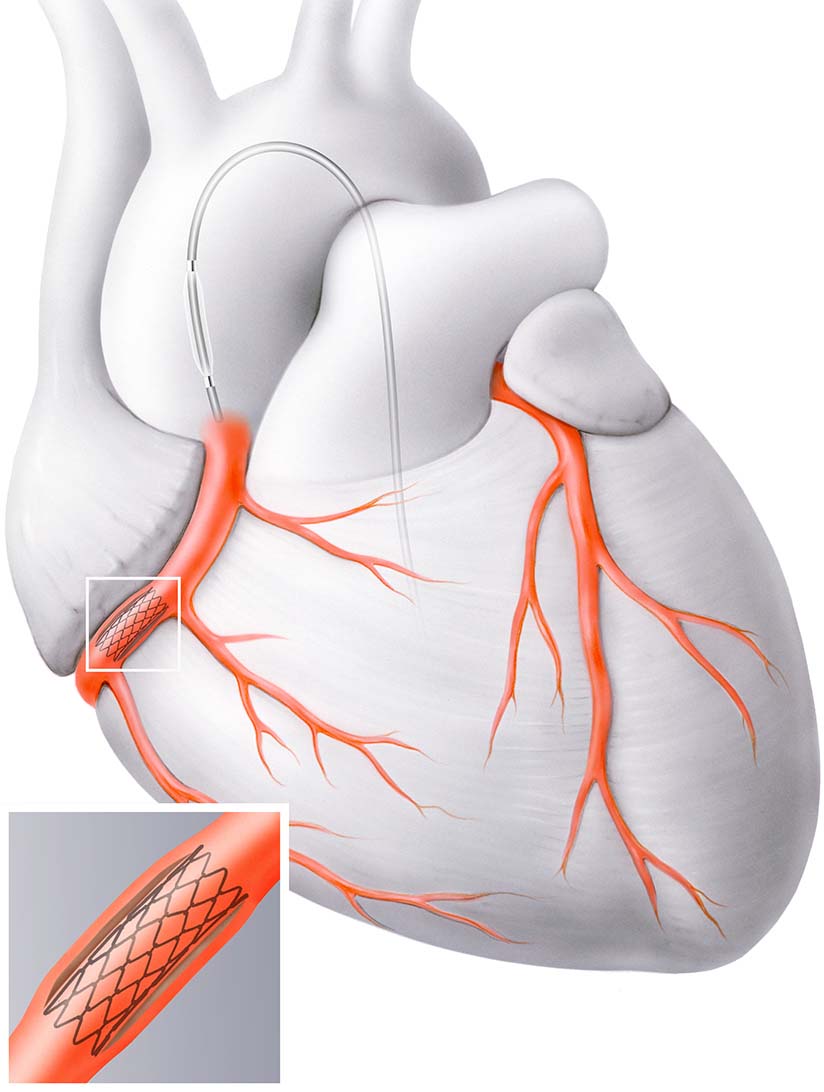 If coronary angiography confirms the presence of significant narrowing (stenosis) of the coronary arteries, these can in many cases be reopened in the same session by means of balloon dilatation and stent implantation in order to restore blood flow and thus the supply of oxygen and nutrients to the heart muscle.
If coronary angiography confirms the presence of significant narrowing (stenosis) of the coronary arteries, these can in many cases be reopened in the same session by means of balloon dilatation and stent implantation in order to restore blood flow and thus the supply of oxygen and nutrients to the heart muscle.
At the beginning of the intervention, a small catheter is inserted into the respective coronary artery. A thinly folded balloon is then advanced into the narrowed segment. Balloon dilatation (inflation of the balloon) is used to widen the stenosis and improve blood flow through the coronary arteries. A stent is usually implanted immediately afterwards. A stent is a flexible tube made of a thin metal mesh. It supports the vessel wall from the inside and prevents re-narrowing.
Bypass surgery is a standard procedure for the treatment of coronary heart disease. During the operation, severely narrowed or completely blocked coronary arteries are bypassed in order to restore an optimal blood supply to the heart muscle. For this purpose, a vascular substitute is prepared from the body’s own veins and arteries.
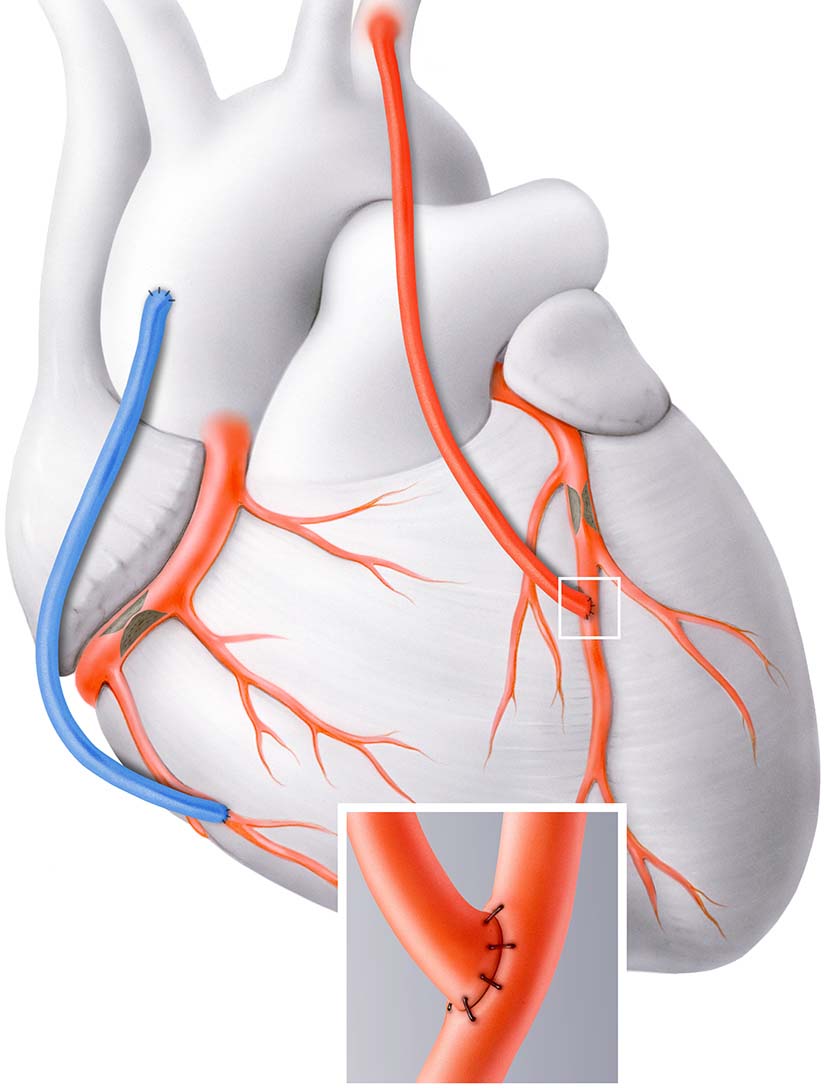
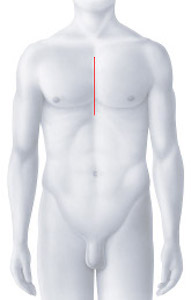
The vascular graft, known as graft material, is usually the left, often also the right thoracic artery, as well as the left brachial artery or a vein from the leg. The graft is sutured to a suitable location behind the narrowing of the coronary artery and the blood flow is guided around the narrowed area.
Bypass surgery is usually performed via a median sternotomy: after induction of general anesthesia, the sternum is cut in the middle, the heart is exposed and connected to the heart-lung machine. Minimally invasive approaches (e.g. between the ribs) are also possible as an alternative.
Alternatively, this operation can also be performed without a heart-lung machine – with so-called off-pump surgery. Off-pump surgery is a technological innovation and can be used routinely for most patients. It enables a gentle operation.
Drug therapy is essential for coronary heart disease.
- Cholesterol-lowering drugs and blood thinners slow the progression of coronary heart disease, improve the prognosis and reduce the occurrence of future cardiac events (such as heart attacks, cardiac insufficiency or cardiac death).
- Blood pressure and blood sugar lowering medications are also important for the treatment of high blood pressure and blood sugar disease, if present.
- In the event of symptoms (angina pectoris), drugs can be used to improve the blood circulation in the coronary arteries and reduce symptoms.
If coronary angiography confirms the presence of significant narrowing (stenosis) of the coronary arteries, these can in many cases be reopened in the same session by means of balloon dilatation and stent implantation in order to restore blood flow and thus the supply of oxygen and nutrients to the heart muscle.
 At the beginning of the intervention, a small catheter is inserted into the respective coronary artery. A thinly folded balloon is then advanced into the narrowed segment. Balloon dilatation (inflation of the balloon) is used to widen the stenosis and improve blood flow through the coronary arteries. A stent is usually implanted immediately afterwards. A stent is a flexible tube made of a thin metal mesh. It supports the vessel wall from the inside and prevents re-narrowing.
At the beginning of the intervention, a small catheter is inserted into the respective coronary artery. A thinly folded balloon is then advanced into the narrowed segment. Balloon dilatation (inflation of the balloon) is used to widen the stenosis and improve blood flow through the coronary arteries. A stent is usually implanted immediately afterwards. A stent is a flexible tube made of a thin metal mesh. It supports the vessel wall from the inside and prevents re-narrowing.
Bypass surgery is a standard procedure for the treatment of coronary heart disease. During the operation, severely narrowed or completely blocked coronary arteries are bypassed in order to restore an optimal blood supply to the heart muscle. For this purpose, a vascular substitute is prepared from the body’s own veins and arteries.

The vascular graft, known as graft material, is usually the left, often also the right thoracic artery, as well as the left brachial artery or a vein from the leg. The graft is sutured to a suitable location behind the narrowing of the coronary artery and the blood flow is guided around the narrowed area.
Bypass surgery is usually performed via a median sternotomy: after administering general anesthesia, the sternum is cut in the middle, the heart is exposed, and connected to a heart-lung machine.

Minimally invasive approaches (e.g., between the ribs) are also an option.
Alternatively, this operation can also be performed without a heart-lung machine – with so-called off-pump surgery. Off-pump surgery is a technological innovation and can be used routinely for most patients. It enables a gentle operation.
Therapies for heart attacks
The most effective procedure is coronary angiography with balloon dilatation and stent implantation of the occluded coronary vessel. Medicinal fibrinolysis (dissolution of the clot in the coronary artery using a highly blood-thinning medication) is hardly used in Switzerland any more, but is still used worldwide, especially in poorer countries.
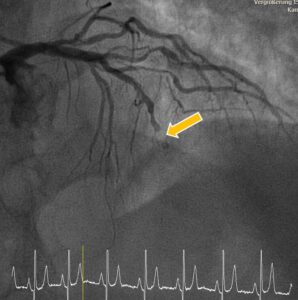
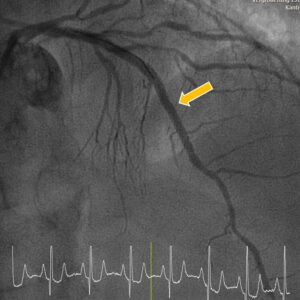
During an emergency cardiac catheterization (coronaty angiography), a small catheter (tube) is introduced into the blocked artery, and the stenosis then reopened by means of balloon dilatation and stent implantation. This restores blood flow to the endangered area of heart muscle and initiates the healing process. Our specialists are on call around the clock (24/7/365) to perform the life-saving procedure in an emergency.
The most effective procedure is coronary angiography with balloon dilatation and stent implantation of the occluded coronary vessel. Medicinal fibrinolysis (dissolution of the clot in the coronary artery using a highly blood-thinning medication) is hardly used in Switzerland any more, but is still used worldwide, especially in poorer countries.


During an emergency cardiac catheterization (coronary angiography), the blocked coronary vessel is probed with a thin wire and then reopened by means of balloon dilatation and stent implantation. This restores blood flow to the endangered area of heart muscle and initiates the healing process. Our specialists are on call around the clock (24/7/365) to perform the life-saving procedure in an emergency.
Further information
Our specialists for coronary artery disease

Prof. Dr. med.
Prof. Dr. med.
Roberto Corti
Roberto Corti
Interventional cardiology
Interventional cardiology
DE – FR – IT – EN
DE – FR – IT – EN

Prof. Dr. med.
Prof. Dr. med.
Jürg Grünenfelder
Jürg Grünenfelder
Cardiac surgery
Cardiac surgery
DE – EN – IT – FR
DE – EN – IT – FR

Prof. Dr. med.
Prof. Dr. med.
Oliver Gämperli
Oliver Gämperli
Interventional cardiology
Interventional cardiology
DE – EN – FR – IT – ES
DE – EN – FR – IT – ES

Dr. med.
Dr. med.
Raffael Ghenzi
Raffael Ghenzi
Senior physician cardiology
Senior physician cardiology
DE – EN – FR – ES
DE – EN – FR – ES

Prof. Dr. med.
Prof. Dr. med.
Diana Reser
Diana Reser
Cardiac surgery
Cardiac surgery
DE – EN – FR – MA
DE – EN – FR – MA
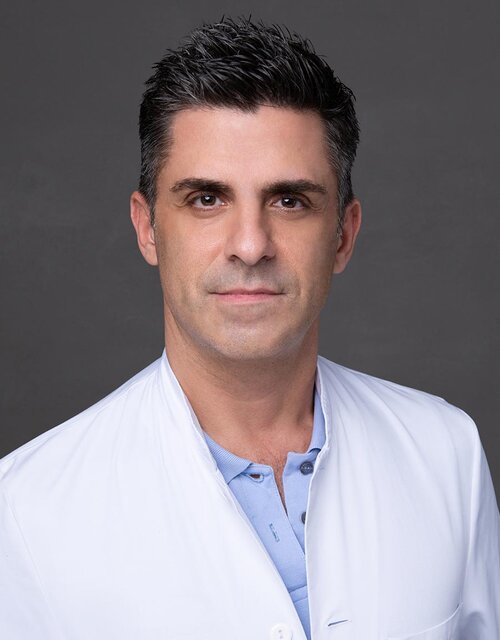
Dr. med.
Dr. med.
Ivano Reho
Ivano Reho
Interventional cardiology
Interventional cardiology
DE – EN – IT – FR
DE – EN – IT – FR
